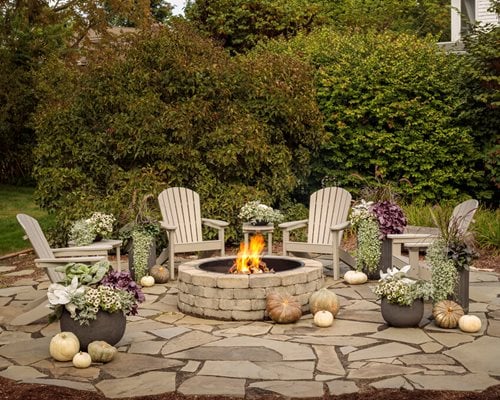Garten Design: Transforming Spaces with Creativity and Style
When it comes to creating a beautiful and functional outdoor space, effective garten design plays a pivotal role. This art of crafting gardens encompasses various elements from planning to execution, ensuring your outdoor area reflects personal style while serving practical purposes. Let’s explore the principles of garden design, focusing on styles, elements, and tips to achieve your dream garden.
Essential Elements of Garden Design
Understanding the basic elements of garten design is crucial for anyone looking to create a harmonious outdoor space. These elements include plants, hardscapes, garden furniture, and decorative features. By blending these components effectively, you develop a garden that is both aesthetically pleasing and functional.
Plants and Their Importance
Plants are the backbone of garten design. They create visual interest, provide shade, and support local ecosystems. When selecting plants, consider their height, color, and seasonal interest. Combining flowering plants with various foliage adds depth and texture to your garden. For instance, using ground covers can eliminate bare soil while providing a lush look. Incorporate different heights and colors to create layers; this method enhances visual appeal and encourages wildlife.

Hardscapes: Defining Your Space
Hardscapes, which include pathways, patios, and walls, provide structure to your garden design. They create separation between different areas, guide foot traffic, and showcase plant arrangements. Use natural stones, bricks, or concrete to create durable features that complement the landscape. For example, a stone pathway can lead visitors through flower beds, while a patio can serve as a gathering space for family and friends, enhancing the utility of the garden.
Popular Garden Design Styles
Diverse garten design styles cater to varying aesthetic preferences. Here are some popular ones to consider when planning your outdoor space:
Modern Garden Design
A modern garden design emphasizes minimalism and clean lines. This style often utilizes geometric shapes, neutral colors, and bold plant selections. For an impactful design, integrate a mix of architectural elements with strategically placed plants to provide contrast. Using raised beds can add visual dimension while making maintenance easier.

Cottage Gardens: Embracing Nature
Cottage gardens celebrate an abundance of blooms and an informal, natural layout. This style is characterized by a mix of perennials, annuals, and herbs that create a vibrant, overflowing effect. Utilizing a variety of colors and scents, cottage gardens often serve not only as beautified spaces but also as functional areas for growing food. Consider adding winding paths and trellises covered with climbing plants to enhance the whimsical feel.
Practical Tips for Effective Garden Design
To ensure your garten design turns out as envisioned, consider these practical tips:
Utilize Space Wisely
Effective space management is vital in garten design. Know your outdoor area’s dimensions and life aspects, such as sunlight, wind patterns, and water drainage. Small gardens can benefit from vertical plantings or layered sections to maximize space while larger fields may require zoning to manage diverse plant selections and uses efficiently.
Planning for Seasonal Changes
Most gardens experience changes with the seasons. To maintain a vibrant garden year-round, choose plants that bloom at different times or incorporate elements that provide structure in the winter. Evergreens, ornamental grasses, and winter-blooming plants can assure that your garden is visually engaging even during the colder months.
Key Takeaways
- Incorporate various plant species for visual layers and seasonal interest.
- Integrate hardscapes to structure and enhance garden utility.
- Choose a garden style that aligns with your aesthetic preference.
- Maximize space through strategic layouts and vertical gardening.
- Plan for seasonal variations to ensure year-round interest.
FAQ
1. What are some low-maintenance plants for a new garden design?
Low-maintenance plants such as succulents, lavender, and ornamental grasses can easily flourish in various conditions. These plants require minimal care like watering and pruning but add beautiful aesthetics to the garden.
2. How can I enhance privacy in my garden design?
To enhance privacy, consider using hedges, trellises with climbing vines, or strategically placed plants to block views from neighbors. You may also incorporate fencing or bamboo screens as added barriers in a stylish manner.
3. Are flowers important in garden design, and how can they be utilized effectively?
Flowers hold significant importance; they inject color, fragrance, and attract pollinators. Their proper utilization involves selecting flowers that complement each other in terms of bloom times and colors, allowing for continuous interest and seasonal variety in the garden space.
4. What is the significance of hardscaping in garden design?
Hardscaping defines the architectural layout of the garden, creating paths, patios, and seating areas. Evolutionary, it supports the garden structure and contributes to ease of navigation and the aesthetic appeal of the outdoor living space.
5. What are some practical ways to incorporate water features in garden design?
Water features such as ponds, fountains, or bird baths can add tranquility to your garden. When designing, consider scale and location; a small fountain can complement any size garden while a pond might require more extensive planning. Select plants that will thrive around these amenities for added beauty.
With these insights and practical tips, creating your dream garten design is achievable. Embrace creativity while staying mindful of the essentials, and your outdoor space will soon transform into a stunning retreat.
